In 2017, as every year, a National Email Survey was conducted among more than 2,000 Dutch people. This again shows that email is the most important form of online marketing. So you can get back to work on new email campaigns!
Two predictions were made in 2016:
- E-mail is becoming increasingly important for e-commerce;
- E-mail is "galvanizing" more and more.
Both predictions came true.
Email still ranks highest relative to other channels and has remained the same or increased in many areas.
In this blog, we share key findings from the survey and compare the new results with those from the previous year (2016).
In 2016, 73% occasionally bought something online in response to email campaigns. In 2017, this increased to 75%. Advertising emails entice us to buy online more often than social media. On average, 30% occasionally buy something through Facebook, but email remains the leader in e-commerce.
In fact, 58% of respondents made a purchase more than once in response to a commercial email message.
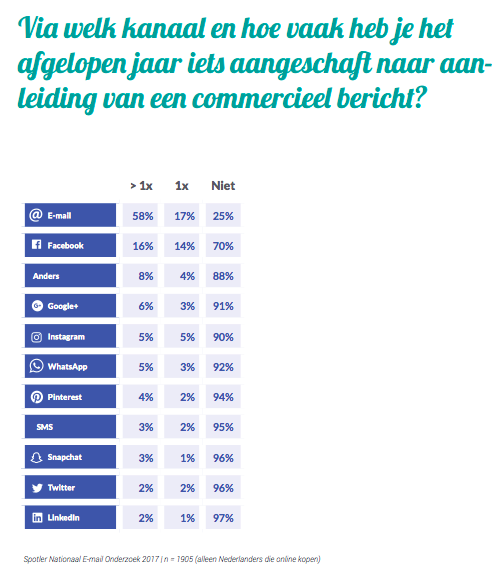
Half of the Dutch make an online purchase every month, 17% even do so weekly. To make an online purchase, 48% go directly to a webshop and 30% google first. Social media score low on this question. With social media making it easier and faster to make an online purchase, we expect social media to score higher this year.
An online purchase is most often made on a smartphone by 16% of Dutch people. It is not yet the most popular device for an online purchase, but this percentage is expected to increase in 2018.
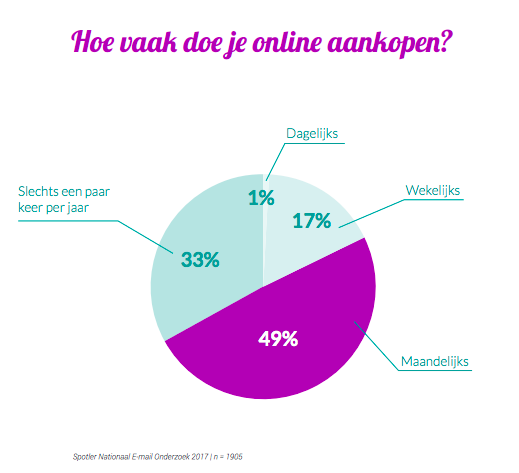
Once again, 85% of respondents subscribed to new email newsletters in the past year. However, 55% subscribed to 1 or more new newsletters in 2017 compared to 57% in 2016. Age does not play a major role in the results. Almost all Dutch show almost the same subscription behavior.
In total 93% of the Dutch subscribe to e-mail newsletters.
The biggest reason people sign up for an e-mail newsletter is a great offer in return. Or after one completes a purchase.
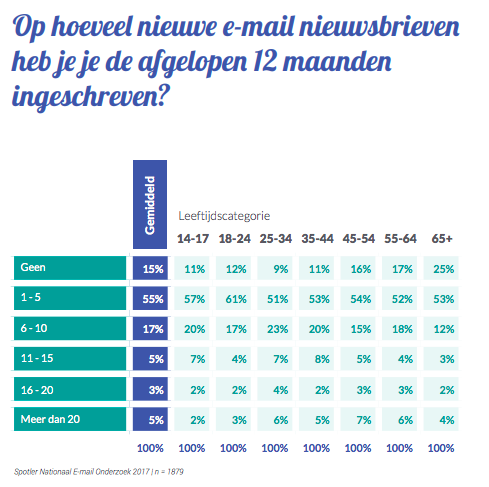
In 2016, 50% still unsubscribed from email newsletters because of too much frequency. In 2017, this increased to 66%! The second reason: 'uninteresting topics' was then at 49%, but also increased to 61%.
Compared to subscriptions, unsubscribes are still lower. 85% subscribe to new e-mail newsletters each year and 78% unsubscribe each year.
The average number of emails received per week in 2015 was 96! This dropped to 79 emails in 2016. Yet in 2017, this number increased again. Dutch people receive an average of 86 emails per week.
Email has increased in popularity when it comes to the number of times we check our email per day. In 2016, 40% checked their email 1-3 times daily. In 2017, an average of 66% checked their email 1-6 times!
Interestingly, in the 65+ age group, even 78% check their e-mail 1 to 6 times. This is the highest percentage of all age categories.
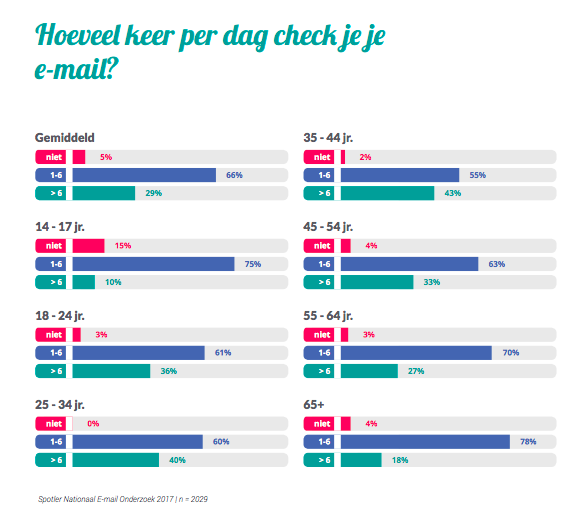
The smartphone is increasing in popularity every year (2016-36%, 2017-37%) and was used most often to read an email by an average of 43% in 2017. The popularity of the laptop is declining in this regard. It was 30% in 2016 and 27% in 2017. Only in the 55+ age group are desktop and laptop used more often than the smartphone.
Gmail is the most widely used e-mail provider in this regard.
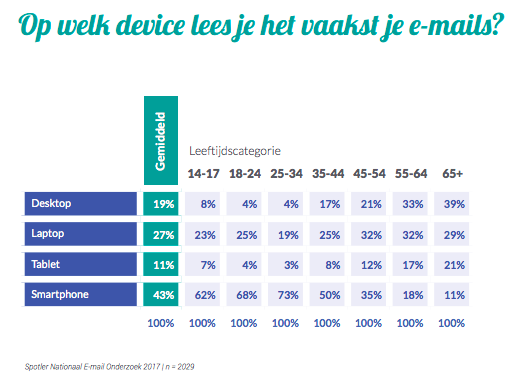
Our digital day in 2017 still starts with email (43%), WhatsApp (31%) and Facebook (15%). Incidentally, this still varies by age group. Indeed, 55+ start their day with email while younger people, e.g. 18-24, start their day with WhatsApp.
Dutch people read their mail at different times of the day. 48% of the Dutch open their mail between 7 p.m. and 9 p.m., in addition, 7 a.m. - 9 a.m. is also a preferred time of day. Only after 23.00 hours we hardly read email anymore.
Between 7 p.m. and 9 p.m., most Dutch people are on social media. WhatsApp is the most used social media platform.
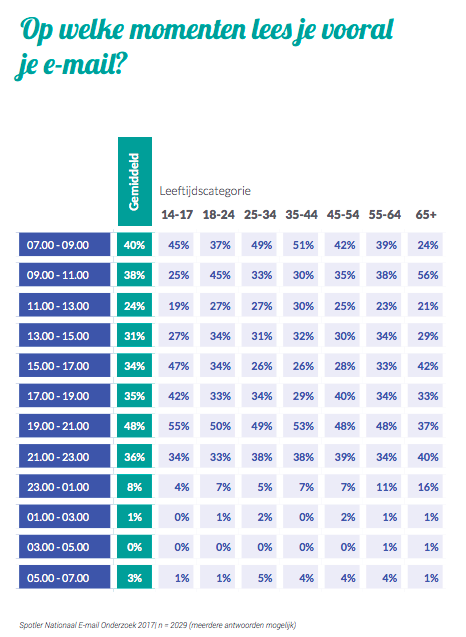
More than half of the Dutch trust e-mail the most when it comes to their privacy. Yet the Dutch have less and less confidence in it. In 2015, email still scored 66%, in 2016 60% and in 2017 58%. Trust in WhatsApp has remained the same: 17%.
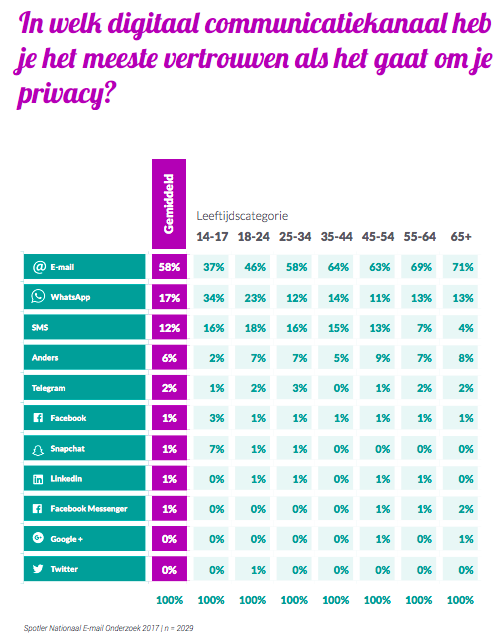
Here and there an increase or a decrease, but the conclusion stands: email is still the most important form of online marketing. Thanks to marketing automation, email campaigns can now be made highly relevant with dynamic content and sent at the right stage of the customer journey. This ensures that you do not send haphazard emails, but rather very segmented and personalized. You can use these emails, among other things, to further guide leads through the customer journey to the sale.
Want more information about marketing automation and/or deploying relevant email campaigns?
Get in touch with us!
